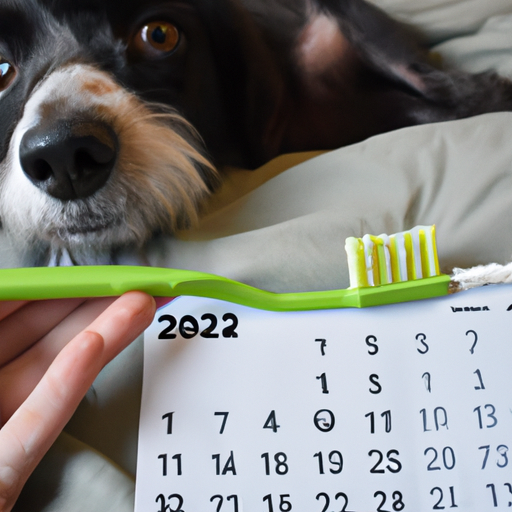There’s no denying that our furry friends hold a special place in our hearts. As caregivers, we’re responsible for their overall health and wellness. One aspect of this care that is often overlooked is dental health. Regular tooth brushing is vital for maintaining your dog’s oral health and preventing serious health problems. In this guide, we’ll discuss how often you should brush your dog’s teeth, the benefits of doing so, and the best tools and techniques for the job.
Table of Contents
- Importance of Dog Dental Health
- How Often to Brush Your Dog’s Teeth
- Tools and Techniques for Brushing Your Dog’s Teeth
- Benefits of Regular Brushing
- FAQs about Dog Dental Health
Key Takeaways
- Maintaining your dog’s dental health is essential to its overall health.
- Ideally, you should brush your dog’s teeth daily.
- Using the right tools and techniques can make the brushing process easier.
- Regular brushing has many benefits, from preventing gum disease to improving breath.
Importance of Dog Dental Health
Just like in humans, poor dental health in dogs can lead to a variety of problems, including tooth decay, gum disease, and even heart disease. According to the American Veterinary Medical Association, most dogs show signs of oral disease by age three ^1^. By maintaining proper oral hygiene, you can help your dog avoid these issues and live a healthier, happier life.
How Often to Brush Your Dog’s Teeth
So, the burning question: How often should you brush your dog’s teeth? Well, just like humans, dogs benefit from daily brushing. However, if this isn’t possible, aim for at least three times a week. This frequency helps to prevent the build-up of plaque and tartar, the main causes of gum disease.
Tools and Techniques for Brushing Your Dog’s Teeth
Brushing your dog’s teeth might seem like a challenge, but with the right tools and techniques, it can be a breeze. Here’s a step-by-step guide:
-
Choose the right tools: Use a toothbrush designed for dogs and dog-friendly toothpaste. Human toothpaste contains ingredients that can be harmful to dogs.
-
Get your dog comfortable: Make sure your dog is relaxed before you begin. You might want to start by gently massaging their lips with your finger.
-
Start brushing: Lift your dog’s lip to expose the teeth and gums. Brush in small, circular motions, focusing on the gum line.
-
Be patient: It might take some time for your dog to get used to having their teeth brushed. Don’t rush the process; instead, make it a positive experience for your dog.
For more tips on caring for your dog’s teeth, check out this comprehensive guide on One Top Dog.
Benefits of Regular Brushing
There are plenty of reasons to make brushing a regular part of your dog’s routine. These include:
-
Preventing gum disease: Regular brushing removes plaque and tartar, reducing the risk of gum disease.
-
Avoiding tooth loss: Dogs with good oral hygiene are less likely to lose teeth as they age.
-
Improving breath: Let’s face it, no one wants a dog with bad breath. Brushing regularly can help keep your dog’s breath fresh.
-
Detecting oral health problems early: Regular brushing gives you a chance to spot any issues early, from cracked teeth to oral tumors.
Remember, good oral hygiene is just one aspect of your dog’s overall health. For more information on keeping your dog healthy, visit One Top Dog’s guide to canine health.
FAQs about Dog Dental Health
1. Can I use human toothpaste to brush my dog’s teeth?
No, human toothpaste contains ingredients like fluoride that can be harmful to dogs. Always use a toothpaste formulated for dogs.
2. What if my dog won’t let me brush their teeth?
If your dog resists brushing, you might need to start slowly. Try using your finger or a soft cloth to massage their gums before moving on to a toothbrush. You can also make the experience more enjoyable by using flavored toothpaste.
3. How can I tell if my dog has dental problems?
Signs of dental problems in dogs include bad breath, difficulty eating, red or swollen gums, and loose or missing teeth. If you notice any of these signs, consult your vet.
In conclusion, brushing your dog’s teeth regularly is an essential part of maintaining their health. By investing a little time each day (or at least several times a week), you can prevent dental disease, improve your dog’s breath, and even extend their lifespan. For more pet care tips, check out One Top Dog’s guide to grooming.



